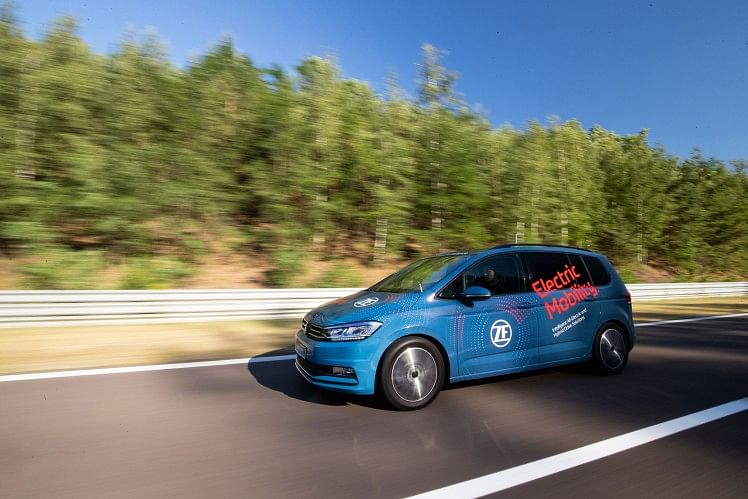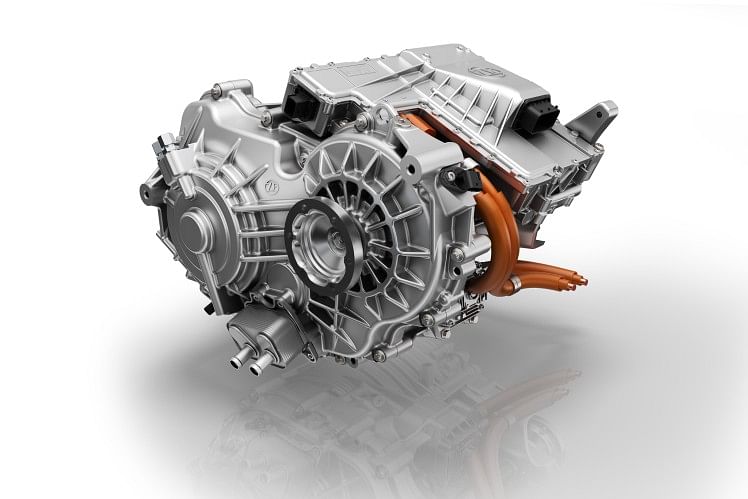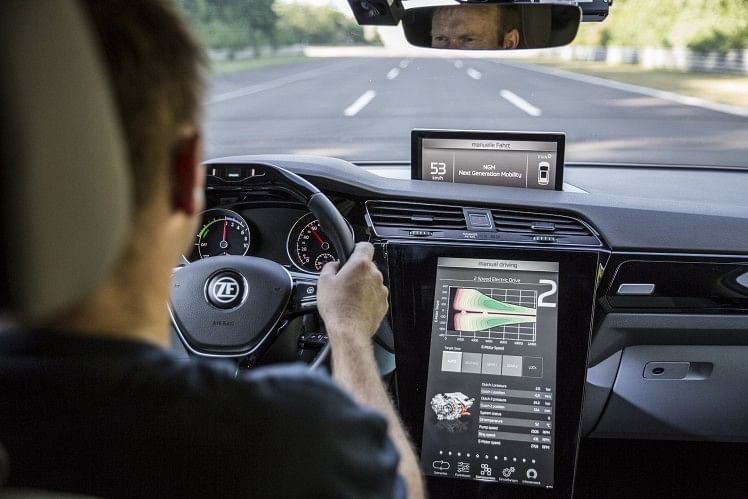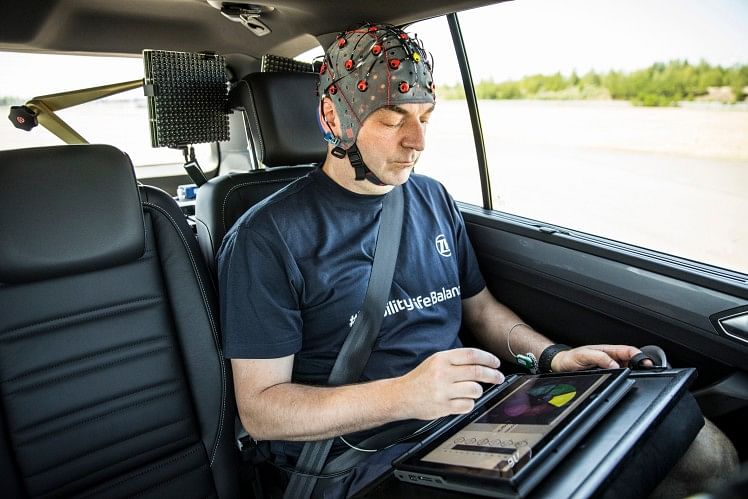ZF reveals innovations aplenty at its Global Technology Day
Technology and component supplier launches product offensive for hybrid and electric drive systems for cars, system solutions for automated driving, integrated safety, and innovative chassis technology.
The ZF Group, at its ongoing Technology Day in Dresden, Germany is extending its product portfolio to include more attractive solutions for the mobility of the future with a product offensive for hybrid and electric vehicles, active chassis systems, integrated safety, and automated driving. The company has premiered the world’s first 2-speed e-drive that improves energy conversion efficiency and extends range. It has also announced the launch of research with German neuro-technologists to detect motion sickness in a passenger at an early stage.
Bert Hellwig, head of system house at ZF’s e-mobility division said, “For electric vehicles in everyday use, it is important to obtain as much range as possible from each battery charge. Every percent of improvement in energy conversion efficiency translates into two percent more range.”
To increase the performance rating of the new electric axle drive system, ZF has leveraged its expertise in systems to develop a new electric motor with a maximum power rating of 140 kW paired with a two-stage shift element. “Bringing together our know-how in relation to electric motors, gearboxes and power electronics ensures that we achieve the best possible range from each battery charge,” said Hellwig.

Intelligent autonomous shift
ZF claims that the vehicles with the new 2-speed drive consume less energy, which in turn extends range by up to five percent when compared to a one-speed unit. Shifts take place at 70 kph. By connecting to the vehicle’s CAN communication it is also possible – if the customer so wishes – to devise other shift strategies, possibly linked to digital map material and GPS. For example, the vehicle could identify from the GPS route programming how far it is to the next charging station, enabling it to respond predictively by switching into Eco-mode. More effective shifts would also be possible in accounting for topography on the interstate, and on inter-city journeys. The software in the drive can also be updated thanks to the network link to Cloud services via over-the-air updates.

ZF's 2-speed e-vehicle drive system
For vehicle manufacturers, the new 2-speed drive offers two options for using improved energy conversion efficiency. The Original Equipment Manufacturer (OEM) could either go for an extended range while retaining the same size of the accumulator, or utilise a smaller accumulator.

The 2-speed concept offers benefits for OEMs who are pursuing performance. “Until now, with electric motors, vehicle manufacturers have had to choose between high initial torque and a high top speed,” explains Hellwig. “We are now resolving this conflict and the new drive will be compatible for performance and heavier vehicles – for example for passenger cars towing a trailer.”
ZF’s modular approach combines the 2-speed gearbox with even more powerful electric motors rated for up to 250 kW. This delivers enhanced acceleration and, potentially, faster top speeds. With its modular concept, the new drive can meet a variety of requirements.
Making cars comfortable, autonomously
Florian Dauth, responsible in ZF Advanced Technology Development for activities in the field of human-centred vehicle motion control, said: “We are among the very first companies in this sector to place the occupants and their individual driving experience centrestage."

The scientific basis for the whole concept of motion sickness in passengers is derived by test candidate studies that were conducted jointly by the systems neuroscience and neurotechnology unit (SNNU) at the Saarland University and htw saar. In these studies, the physiological reactions of test candidates were examined in a variety of driving situations.
“Our pioneering research incorporates the fields of neuro-technology, psycho-physiology, artificial intelligence and driving dynamics,” recounts Prof Dr Daniel J Strauss, director of the SNNU. “The respective skill sets of the partners complement one another perfectly in the context of this collaborative project. The scientific results obtained to date have been very well received by the international specialist community.”
Motion sickness is caused by a discrepancy in perception: The balance organ in the inner ear senses a movement that is not confirmed by other sense organs such as the eyes. This is most likely to happen when a passenger is concentrating on a screen or a book. In this situation, the human body responds with a reaction that is in many ways similar to the response to poisoning. The symptoms range from a slight sense of unease to acute motion sickness.
Dauth further explains, “Our ‘Motion Sickness Research Vehicle’ enables us, with the help of a high-performance computing platform, to record a large number of physiological measuring data, camera data, and measurements relating to driving dynamics. At the same time, the vehicle serves as a platform for the development and validation of algorithms.”
Everyone reacts differently to vehicle movements and possesses an individual sense of ride comfort. At ZF, this fact is depicted in an algorithm based on artificial intelligence methods that acquire knowledge of the physical reactions of each passenger, enabling a personalized profile to be created. As a consequence of this, individual data are obtained for every passenger in a vehicle, meaning that automated vehicles would actually be able to store the preferred driving style of each passenger.
Also read: ZF to supply new 8-speed automatic transmission to FCA
RELATED ARTICLES
Autoliv Plans JV for Advanced Safety Electronics With China’s HSAE
The new joint venture, which is to be located strategically near Shanghai and close to several existing Autoliv sites in...
JLR to Restart Production Over a Month After September Hacking
Manufacturing operations at the Tata Group-owned British luxury car and SUV manufacturer were shut down following a cybe...
BYD UK Sales Jump 880% in September to 11,271 units
Sales record sets the UK apart as the largest international market for BYD outside of China for the first time. The Seal...






 By Autocar Professional Bureau
By Autocar Professional Bureau
 03 Jul 2019
03 Jul 2019
 10416 Views
10416 Views





 Ajit Dalvi
Ajit Dalvi




